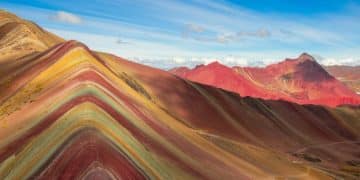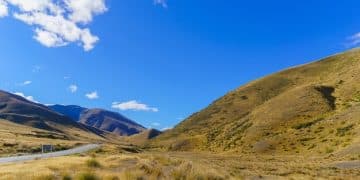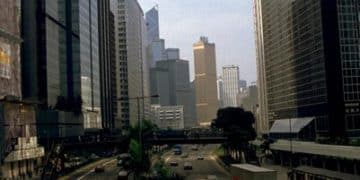Best Time to Visit Peru 2025: Seasonal Guide for US Travelers

Planning a trip to Peru in 2025? This seasonal guide helps US travelers discover the best time to visit Peru, considering factors like weather, festivals, and the ideal experiences for each season, ensuring an unforgettable journey.
Planning a trip to Peru from the US can be an exciting endeavor. Understanding the seasonal nuances can significantly enhance your experience. This guide, “The Best Time to Visit Peru: A Seasonal Guide for US Travelers Planning Their Trip in 2025,” offers insights tailored for American travelers.
Understanding Peru’s Diverse Climate
Peru’s climate is diverse, varying greatly depending on the region and altitude. Coastal areas are generally mild, while the Andes experience distinct wet and dry seasons. The Amazon rainforest is hot and humid year-round. Understanding these variations is critical when deciding on the best time to visit.
Coastal Climate
The coast of Peru, where Lima is located, has a desert climate. It’s often characterized by mild temperatures and low rainfall. During the summer months (December to March), you can expect sunny days and warm weather, making it ideal for beach activities.
Andean Climate
In the Andes, which includes Cusco and Machu Picchu, the climate is split into two main seasons: the rainy season (November to March) and the dry season (April to October). The dry season is typically preferred for trekking and outdoor activities, as the weather is more predictable and the skies are clearer.
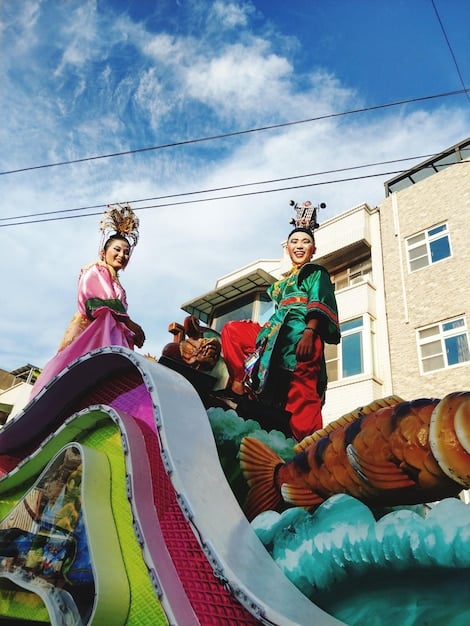
Amazon Climate
The Amazon rainforest has a tropical climate, with high temperatures and humidity year-round. Rainfall is common throughout the year but tends to be heavier during the wet season (November to April). Despite the rain, the Amazon is teeming with life and offers unique experiences regardless of the season.
Peru’s diverse climate zones cater to a wide range of interests. Whether you’re seeking sunny beaches, mountain treks, or rainforest adventures, understanding the seasonal weather will help you optimize your travel plans. This will help you get the most enjoyment out of your stay.”
The Dry Season (May to September): Ideal for Trekking
The dry season, running from May to September, is widely considered the best time for trekking and exploring the highlands. Clear skies, less rain, and comfortable temperatures make it an excellent choice for hiking enthusiasts.
During these months, you’ll find the Inca Trail in optimal condition, offering breathtaking views. However, this also means a greater number of tourists. Planning ahead is essential.
Here are some advantages of planning your trip during the dry season:
- Clear skies: Enjoy unobstructed views of the mountains.
- Less rain: Reduce the chances of slippery trails and disrupted plans.
- Comfortable temperatures: Experience milder temperatures, especially during the day.
Evenings can be cool, so remember to pack layers. Also, note that the peak of the dry season aligns with Peru’s winter, so while it’s dry, it can still get chilly, especially at higher altitudes. Packing warm clothing is essential, especially if you plan to be out early or late in the day.
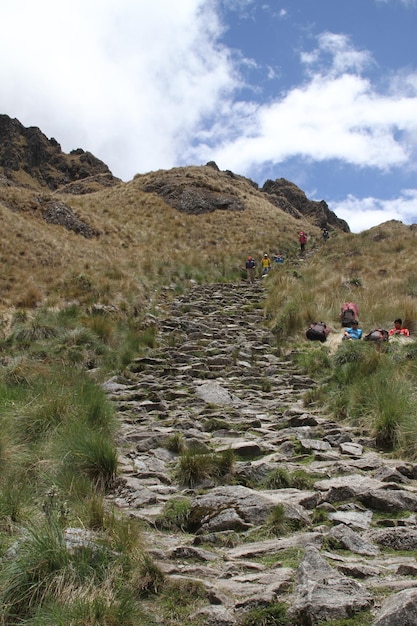
The dry season is the most popular for a reason, it is easier to navigate. If you’re planning on doing any serious hiking make sure to pack good quality shoes. Overall, this season is easier and more enjoyable for seeing the mountains.
The Wet Season (November to March): Lush Landscapes and Fewer Crowds
The wet season, from November to March, offers a different perspective of Peru. While it’s characterized by more frequent rainfall, it also brings lush landscapes and fewer tourists. This period can be an attractive option for those who don’t mind the rain.
Advantages of Traveling During the Wet Season
The rainy season can be a beautiful time to visit Peru. The landscapes turn vibrant green, and certain areas, like the Amazon, are at their most navigable by boat. However, be prepared for occasional disruptions to travel plans due to rain or flooding.
Here are some benefits during the wet season:
- Lush landscapes: Experience the vibrant greenery as the environment thrives.
- Fewer crowds: Enjoy a more relaxed and intimate travel experience.
- Lower prices: Take advantage of off-season deals on accommodations and tours.
Despite the challenges, the wet season can offer a unique and rewarding experience for those prepared to embrace it. You’ll encounter fewer crowds at popular sites and the opportunity to see Peru’s landscapes at their most vibrant.
Shoulder Seasons (April-May & September-October): Best of Both Worlds
The shoulder seasons, which occur in April-May and September-October, offer a blend of the best aspects of both the dry and wet seasons. These periods typically have pleasant weather, fewer crowds, and reasonable prices.
Weather Considerations During Shoulder Seasons
During the shoulder seasons, the weather is often more predictable and pleasant. You’re likely to encounter fewer rain showers than during the wet season and fewer crowds than during the peak of the dry season. It’s a sweet spot balance of affordability and accessibility.
Activities to Enjoy
The shoulder seasons are ideal for exploring both the highlands and coastal regions. Trekking is still possible, and you can avoid the larger crowds. Coastal areas offer pleasant weather for beach activities.
Here are some key activities:
- Machu Picchu: Explore with fewer crowds.
- Coastal exploration: Enjoy comfortable temperatures.
- Amazon expeditions: Experience vibrant rainforests.
The shoulder seasons are an excellent choice for travelers seeking a balance between good weather, smaller crowds, and reasonable prices. They offer the chance to experience Peru’s diverse attractions in more comfortable and intimate settings.
Festivals and Events: Planning Your Trip Around Peruvian Culture
Peru is rich in culture, and its festivals and events are an integral part of its identity. Timing your visit to coincide with these celebrations can add a unique dimension to your travel experience.
Inti Raymi (June): Festival of the Sun
Inti Raymi, the Festival of the Sun, is one of the most significant events in the Andean region. It takes place in Cusco every June and celebrates the winter solstice and the Incan New Year. The festival features colorful processions, traditional music, and indigenous rituals. Make sure to plan lodging and travel in advance.
Semana Santa (Holy Week): Religious Celebrations
Semana Santa, or Holy Week, is another important celebration in Peru. It takes place during the week leading up to Easter and features religious processions, ceremonies, and cultural events throughout the country. Cuzco is a especially great spot to be during Semana Santa.
Timing your visit around these events can be a rewarding experience, offering a deeper understanding of Peru’s vibrant heritage. Remember to make reservations well in advance, as these events draw large crowds.
Tailoring Your Trip to Regional Interests
Peru offers a diverse range of experiences, from exploring ancient ruins to trekking in the Andes and discovering the Amazon rainforest. Tailoring your trip to your specific interests will ensure a memorable adventure.
For History Buffs
If you’re passionate about history, you’ll want to spend a good amount of time in Cusco and the Sacred Valley. Machu Picchu is a must-see, but there are also many other archaeological sites, such as Ollantaytambo and Pisac, that offer insights into Incan civilization. Visit these sites during the dry season for optimal accessibility.
For Adventure Seekers
Adventure seekers will find plenty to do in Peru, from trekking the Inca Trail to white-water rafting and mountain biking. Huaraz, in the Cordillera Blanca, is a popular base for mountaineering and trekking expeditions. Plan these activities from May through September for the best weather conditions.
Consider your interests and plan your itinerary accordingly to make the most of “The Best Time to Visit Peru: A Seasonal Guide for US Travelers Planning Their Trip in 2025”.
| Key Point | Brief Description |
|---|---|
| ☀️ Dry Season (May-Sept) | Ideal for trekking, clear skies, less rain. |
| 🌧️ Wet Season (Nov-Mar) | Lush landscapes, fewer crowds, lower prices. |
| 🗓️ Shoulder Seasons | Balance of good weather, small crowds. |
| 🎉 Inti Raymi (June) | Festival of the Sun, vibrant cultural event in Cusco. |
FAQ
▼
The best months to visit Machu Picchu are during the dry season, from May to September. These months offer the most favorable weather conditions for trekking and exploring the site, with clear skies and minimal rain.
▼
Yes, it is generally cheaper to travel to Peru during the wet season (November to March). You can often find lower prices on accommodations, tours, and flights due to the reduced tourist traffic during these months.
▼
Your packing list should include layers of clothing, as temperatures can vary greatly depending on the region and time of day. Also pack sturdy hiking shoes, rain gear, sunscreen, insect repellent, and any necessary medications.
▼
US citizens do not typically need a visa for tourist stays of up to 180 days. Do double check entry requirements well in advance. Valid passport and proof of onward travel may be required as well.
▼
Peru is generally a safe country for tourists. However, it’s important to take precautions against petty crime, especially in crowded areas. Stay aware of your surroundings and take care of your belongings. It is a good idea to register with the US Embassy before you come.
Conclusion
In conclusion, “The Best Time to Visit Peru: A Seasonal Guide for US Travelers Planning Their Trip in 2025“, depends on your preferences and interests. Whether you seek the clear skies of the dry season, the lush landscapes of the wet season, or the balanced conditions of the shoulder seasons, Peru offers unforgettable experiences year-round. By considering the climate, festivals, and your personal interests, you can plan a trip that perfectly suits your needs and creates lasting memories.
